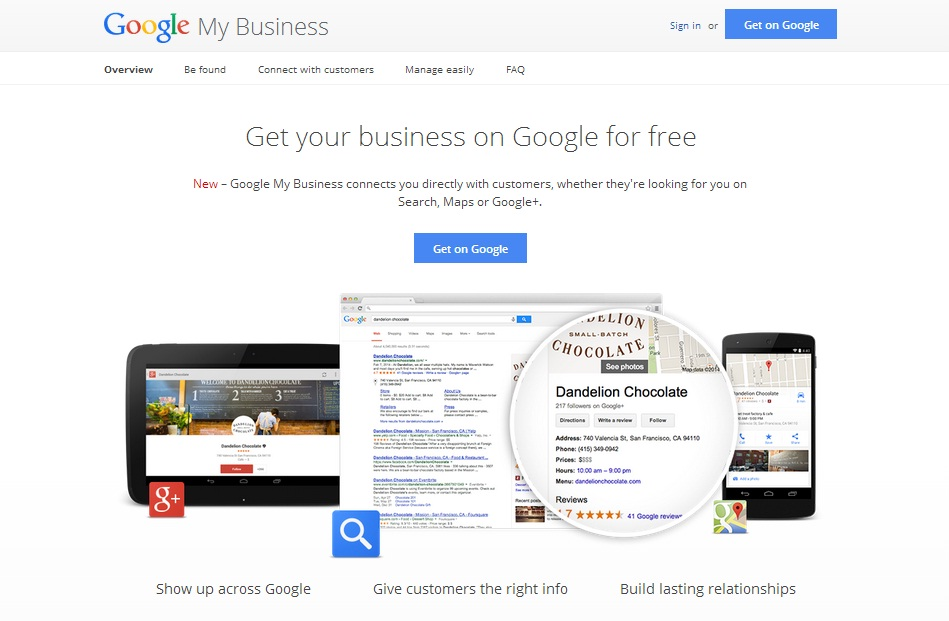These days, consumers seem to put more trust in a company that has a website,…
If you have a business with several branches, what do you do with your website? Do you create just one site or do you make one for each location?
According to Matt Cutts, the head of the Webspam team at Google, the best way to approach this is to have a web page for each store or office. His advice is, to make a URL for each location that’s unique and easily crawlable by the search engines’ spiders. This way,
search engines will be able to determine your relevance to a local search made, and people will be able to find your business if you have one in their location. Why is this important? Because this is one effective way of converting a search into a sale.
For example, if your jewelry store has a branch in Tokyo and someone in the city is looking for a jeweler, then your store will most likely come up in the results if you’ve optimized for local queries in Tokyo.
So, how do you optimize for local queries?
So, your business has a domain name (e.g. www.office.com) and your pages have their own URLs (e.g. www.office.com/about). But how can search engines (and people making searches) know that you’re in their area? It helps if you create subdomains that show the locations of your branches.
For example, Craigslist’s main page is www.craigslist.org, but the company is in 70 countries and has over 700 local sites. To make it easier for users, it has created subdomains that are descriptive of their locations, like http://bangkok.craigslist.co.th/ (Thailand), http://singapore.craigslist.com.sg/ (Singapore), and http://tokyo.craigslist.jp/ (Tokyo, Japan).
In a designer’s perspective, it’s important to have a uniform look to your pages. The consistency creates a feeling of cohesiveness and continuity, and this makes the website one whole “entity” rather than a random collection of Web pages.
Uniform as they are, however, your pages need to have unique content. This not only prevents potential penalties for duplicate content, but it provides your local visitors with a more targeted and higher quality user-experience. For instance, even if the landing page for your branches in Brunei and Japan look almost the same and you’d like to introduce your products in much the same way for both, you can still present them in a way that would appeal to your culturally-different audiences.

A sitemap is one of the most important tools that you can have if you have multiple offices or stores. A sitemap is, basically, a page or document that contains a list of the pages on your site that both the users and spiders can use. It shows the structure of your site, the sections, the relationships between pages, and more. Typically, it’s like a table of contents that’s arranged hierarchically, but some are designed to look like index cards or may even look three-dimensional.
Some details in a rather complex sitemap (e.g. XML format) don’t need to be seen by visitors, and this is mainly for the benefit of the search engine. This is submitted to Google to let them know about the pages in your site (even those that a spider may not discover using the normal process) and it tells the bot the relationship between these pages and how important they are to each other.
For instance, if you have your main office in Brunei and you have an equivalent page for your office in Japan, then you can let Google know, through your sitemap, that you have www.office.com/br and www.office.com/jp.
But your site also has to have an HTML sitemap that visitors can use to navigate through your pages and let them know “where” they are within your Website.

If you want to be found, then you’d need to be visible where people are likely to look. Directories are a good place, such as Google My Business (or you can use Google My Business Locations if you have 10 or more branches). This is a useful, free service for your company, and makes you accessible whether customers are using Google+, Google Maps, or Google Search.
Also, maintain your listing in directories like Yahoo!, Bring, Yelp, Foursquare, and others.
When you put your business and addresses in several directory listings, it’s best if you use the same structure each time. For instance, if you enter your address as 101 Straight St., Curved Village in one listing, then try not to use #101 Straight Street., Curved Vill. in another.
Your Web developer should also implement localized schema markups for structured data in your site. This means that your developer should use special tags that will help search engines extract information like your business name, address, and phone number and display them in search results.
And of course, don’t forget to make a page in your site that tells people in which places they can find you. List down your locations on that page, and make them clickable so people will be directed to the specific page for that location.
Aiming to rank in local listings will greatly help in boosting your business. While your pages are targeted toward a smaller audience, it’s nonetheless an audience that’s relevant and is more likely to become your customers.